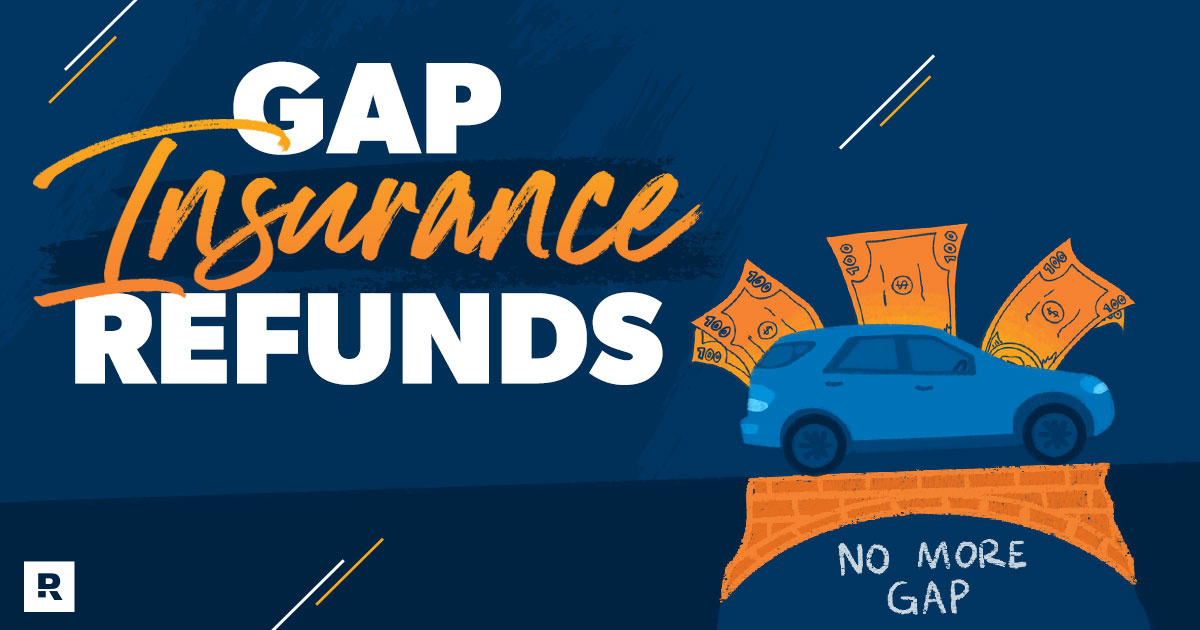When you purchase a new car, you might consider investing in gap insurance to protect yourself financially in the event that your car is totaled or stolen and you owe more on the car than its depreciated value. However, if you’ve paid off your car loan early or sold your vehicle, you might be entitled to a gap insurance refund. Calculating this refund can seem daunting, but with a step-by-step approach, you can confidently determine the amount you should get back. This guide will walk you through how to calculate your gap insurance refund, ensuring you’re well informed and prepared to reclaim what is owed to you.

Understanding Your Gap Insurance Policy
Before you can calculate your refund, you need to thoroughly understand the specifics of your gap insurance policy. Gap insurance covers the difference between what you owe on your vehicle and its actual cash value at the time of a total loss. If you’ve paid off your loan early or the terms of your financing have changed, you may no longer need this insurance.
Detailed Steps
- Review Your Policy Terms: Look at the initial paperwork and terms of your gap insurance. Pay particular attention to the duration of your policy and the rules around cancellation and refunds.
- Contact Your Insurance Provider: Ask about their process for calculating refunds. Different providers might have different methods.
- Gather Necessary Documents: You’ll likely need documents that prove your loan has been paid off or your car was sold.
Summary
Understanding your gap insurance policy is crucial. It helps you recognize if you’re entitled to a refund and how you can initiate the process. The downside is that policies can be complex, and understanding them may require assistance from your insurance provider or a financial advisor.
Calculating the Policy Start Date and End Date
The amount of your potential refund largely depends on when your gap insurance coverage began and when it is or was terminated.
Detailed Steps
- Identify the Policy Start Date: This is often the date you purchased or leased your vehicle.
- Pinpoint the End Date: This could be the date you paid off your vehicle, sold it, or traded it in.
- Assess the Time Remaining on Your Policy: Calculate the number of months or days until your policy was set to expire from your end date.
Summary
Calculating the period for which you’ve been covered versus the period you won’t need the insurance can give you a basic idea of the time for which you should be refunded. However, on the downside, insurance companies might have specific cutoff dates for cancellations, leading to less-than-expected refunds.
Computing the Unused Premium
Gap insurance premiums are paid upfront for the entire term of the policy. The refund will consist of the unused portion of what you originally paid.
Detailed Steps
- Find the Total Premium Paid: Check your policy documents for the amount you paid for gap insurance.
- Calculate the Daily Rate: Divide the total premium paid by the number of days in your policy term.
- Compute the Refund Amount: Multiply the daily rate by the number of unused days on your policy following the end date.
Summary
Computing the unused premium can offer you a rough estimate of your expected refund. However, insurance providers may subtract fees and have minimum months of premium that are non-refundable, which can reduce the refund amount.
Evaluating Prorated Refunds
Most gap insurance refunds are prorated, meaning you are refunded for the unused portion of coverage on a proportional basis.
Detailed Steps
- Understand Proration: Proration allocates the insurance cost according to the precise amount of time coverage extends beyond the cancellation date.
- Prorate Your Premium: Utilize the daily rate calculated previously to prorate the premium from the actual end date of vehicle ownership.
- Adjust for Cancellation: Account for any cancellation fees that might diminish your refunded amount.
Summary
Proration ensures fairness in the refund process, as you pay only for the coverage you used. However, prorated refunds can be complicated by fees and policies that may affect the final amount returned to you.
Contacting Your Lender or Leasing Company
Your lender or leasing company might be the entity that actually handles the cancellation and refund process of your gap insurance.
Detailed Steps
- Reach out to Your Lender: Inform them that you have paid off your loan or are no longer in possession of the vehicle.
- Request Cancellation Procedures: Ask for detailed steps on how to cancel your gap insurance policy.
- Follow Their Instructions: Submit any required documentation and follow up to ensure the cancellation is processed.
Summary
Engaging your lender or leasing company can facilitate the refund process and help avoid miscommunication. The downside is that it can take time to get through the bureaucracy and receive your funds.
Reading the Fine Print
Understanding the terms and conditions of your gap insurance policy is crucial.
Detailed Steps
- Review the Policy Details: Re-read your contract’s cancellation and refund clauses.
- Look for Specific Conditions: Note any particular conditions that may affect your refund, such as time limits on claiming it.
- Clarify Ambiguities: Contact your insurance provider to explain any unclear portions.
Summary
Reading the fine print can reveal hidden terms that impact your refund, both positively and negatively. It requires diligence and possibly assistance from someone versed in insurance terminology.
Documenting Communications
As you navigate the cancellation and refund process, it’s important to document all communications with your insurance provider and lender.
Detailed Steps
- Keep Records of all Conversations: Save emails, note phone calls with time, date, and summary of conversation.
- Request Written Confirmations: When possible, get confirmation in writing of the actions taken regarding your refund.
- Organize Your Documentation: Keeping a well-organized file can help if disputes arise.
Summary
Documenting communications creates a paper trail that can ensure your refund is handled according to what was promised. The downside is it requires additional effort and organization on your part.
Monitoring the Refund Process
You’ll want to carefully track the progress of your refund request to ensure it’s being processed accurately and in a timely fashion.
Detailed Steps
- Follow Up Regularly: Check in with your insurance provider or lender to get updates on your refund status.
- Mark Your Calendar: Note expected timelines and create reminders for yourself to follow up.
- Inquire About Delays: If the process is taking longer than expected, don’t hesitate to ask why.
Summary
Monitoring the refund process can give you peace of mind and help ensure you receive what you’re owed. It might require persistence and sometimes confrontation if there are unexpected delays.
Understanding State Regulations
Insurance is regulated at a state level, and each state has its own rules regarding gap insurance and refunds.
Detailed Steps
- Research State Laws: Look up the regulations governing gap insurance in your state.
- Examine Applicable Rules: Identify how these laws pertain to your situation and refund.
- Leverage the Law: Use your understanding of state laws to advocate for your refund if necessary.
Summary
Knowing your rights under state laws can empower you in discussions with insurance providers, potentially leading to a better refund outcome. However, state laws can be complex and may differ significantly from one state to another.
Consulting with Insurance Specialists
When in doubt, consult with professionals who deal with insurance policies and refunds day in and day out.
Detailed Steps
- Identify a Specialist: Find someone knowledgeable about gap insurance, such as an insurance agent or financial advisor.
- Seek Advice: Ask for guidance on calculating your refund and navigating any issues.
- Consider Expert Services: If the process seems too complex, you may want to hire a professional to manage it for you.
Summary
Consulting with specialists can simplify the process and give you confidence. The potential downside is the cost of professional services and the fact that hiring a professional is not always necessary.
Exploring Online Calculators and Tools
There are online tools available that can simplify the calculation of your gap insurance refund.
Detailed Steps
- Search for Online Calculators: Look for reputable websites offering gap insurance refund calculators.
- Input your Information: Provide details such as your premium amount, payment dates, and end date.
- Analyze Results: Use the calculated refund as a starting point for discussions with your insurance provider.
Summary
Online calculators can provide an efficient way to estimate your refund. However, they might not consider specific terms and cancellation policies, so treat the results as a rough guide rather than an exact figure.
In conclusion, while calculating a gap insurance refund can involve a series of steps and strong attention to detail, understanding the process ensures you receive the correct amount back. The effort put into gathering information and staying on top of the process can result in reclaiming funds that are rightfully yours. Always remember to read through your policy carefully, keep comprehensive records, and seek professional advice if needed to navigate through this financial journey smoothly.
FAQs
Q: How long does it typically take to receive a gap insurance refund?
A: The time it takes to receive a gap insurance refund can vary based on the provider’s policies and the efficiency of your communication, but typically, it can range from a few weeks to a couple of months.
Q: What should I do if the refund amount is less than I expected?
A: Carefully review your policy’s terms regarding cancellations and refunds, and compare them to your calculation. If the numbers don’t match up, reach out to your insurance provider for clarification and to resolve any discrepancies.
Q: Can I cancel my gap insurance and get a refund if I sell my car or pay off my loan early?
A: Yes, you can usually cancel gap insurance and get a prorated refund if you sell your car, trade it in, or pay off your loan early. However, make sure to process the cancellation promptly and follow the necessary steps outlined by your provider.







